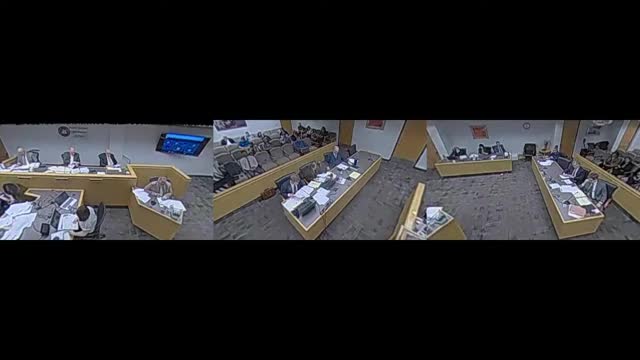Washington reports $300M wildfire loss as industry assesses 2024 risk data
March 23, 2025 | Utah Public Service Commission, Utah Subcommittees, Commissions and Task Forces, Utah Legislative Branch, Utah
This article was created by AI summarizing key points discussed. AI makes mistakes, so for full details and context, please refer to the video of the full meeting. Please report any errors so we can fix them. Report an error »

In a recent government meeting focused on the Phase III Hearing regarding the DAO Docket Issues related to Rocky Mountain Power's rate case, significant discussions emerged about wildfire risks and their financial implications for Utah residents.
One of the key points raised was the alarming trend in wildfire losses, with the largest aggregate insured wildfire loss in the United States reaching $2.7 billion in 2020. Comparatively, Washington reported a significant loss of $300 million in 2023. However, when questioned about Utah's wildfire risk, officials did not provide specific figures for the largest aggregate insured wildfire loss, highlighting a potential gap in data that could affect local preparedness and insurance considerations.
Commissioner Arvey probed deeper into the calculations used by Rocky Mountain Power, particularly regarding market share data. The analysis relied on a general market share number derived from industry data, which was then applied to the total number of households in Utah. This approach raised questions about the accuracy and specificity of the data, as it did not account for detailed customer distribution across different areas of the state.
The discussions underscored the importance of reliable data in assessing wildfire risks and the financial implications for residents. As Utah faces increasing wildfire threats, the need for comprehensive and localized information becomes crucial for effective risk management and insurance planning.
As the meeting concluded, the focus on wildfire risks and the methodologies used in financial assessments highlighted the ongoing challenges that Utah residents may face in terms of safety and economic stability. The outcomes of these discussions will likely influence future policies aimed at enhancing community resilience against wildfires.
One of the key points raised was the alarming trend in wildfire losses, with the largest aggregate insured wildfire loss in the United States reaching $2.7 billion in 2020. Comparatively, Washington reported a significant loss of $300 million in 2023. However, when questioned about Utah's wildfire risk, officials did not provide specific figures for the largest aggregate insured wildfire loss, highlighting a potential gap in data that could affect local preparedness and insurance considerations.
Commissioner Arvey probed deeper into the calculations used by Rocky Mountain Power, particularly regarding market share data. The analysis relied on a general market share number derived from industry data, which was then applied to the total number of households in Utah. This approach raised questions about the accuracy and specificity of the data, as it did not account for detailed customer distribution across different areas of the state.
The discussions underscored the importance of reliable data in assessing wildfire risks and the financial implications for residents. As Utah faces increasing wildfire threats, the need for comprehensive and localized information becomes crucial for effective risk management and insurance planning.
As the meeting concluded, the focus on wildfire risks and the methodologies used in financial assessments highlighted the ongoing challenges that Utah residents may face in terms of safety and economic stability. The outcomes of these discussions will likely influence future policies aimed at enhancing community resilience against wildfires.
View full meeting
This article is based on a recent meeting—watch the full video and explore the complete transcript for deeper insights into the discussion.
View full meeting

